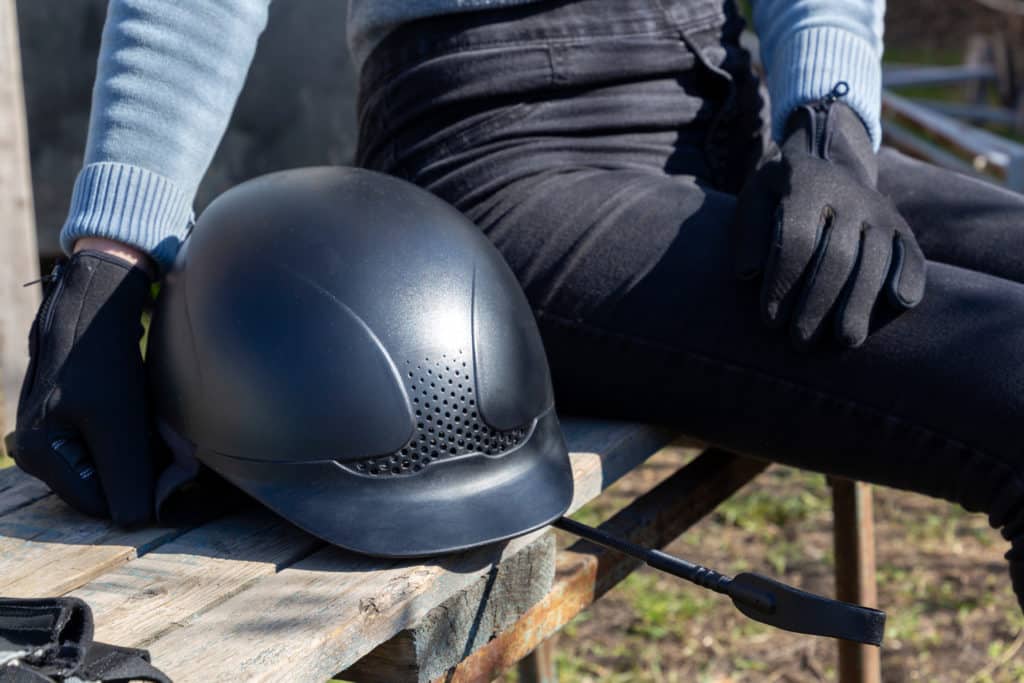Equine Lifestyle
Riding Hat
What horse-riding hat will you be buying this winter? Read this guide before you do:
Choosing your riding hat can be great fun, but it is also a huge decision. Horse riding is a high-risk sport and so keeping yourself safe is priority.
Whether you’re a competing rider or just starting out, use this guide to help you find the best riding hat for you.
What is a riding hat?
Riding hats – also known as riding or equestrian helmets – are a form of protective headgear used when riding horses. They are specifically designed to shield the riders head in case of a fall, kick, or blow.
• Outer shell: The top layer of your riding hat is designed to minimise the impact of a blow by gliding across surfaces and dispersing energy. The plastic or fibreglass shell underneath prevents sharp objects from penetrating the skull and spreads the force of impact before it reaches the next level
• Protective inner shell: Made from expanded polystyrene (EPS), this layer comprises tiny beads that act similarly to bubble wrap. On impact, the beads will burst and absorb the blow. This helps protect the brain from bruising and concussion
• Padded inner lining: This padded and foam layer moulds to your head shape and provides you with the secure fit.
What kind of helmet do I need for horse riding?
Riding hats fall into two broad categories: skull caps or fixed peak riding hats/helmets. The type you require will depend on the type of riding you participate in.
Riding hats
– Fixed peak
– Protects eyes and face from sunlight
– Basic or elegant in style
– Not suitable for cross country (increased risk of injury)
Skull Caps
– No fixed peak
– Suitable for all equestrian activities
– Same safety features as riding hat
– Customisable
Every head shape is different – ideally a BETA approved stockist will help you to find the best fitting helmet. If this isn’t possible you can use the following guidelines to measure your own head.
1. Take a fabric measuring tape and wrap it around the widest part of your head [start an inch above the eyebrows and take it around the bump at the back of your head]
2. Record measurement in either cm or inches (in line with manufacturing size guide)
3. Repeat several more times for accuracy
4. Refer to the manufacturer sizing chart to choose the correct size hat
Notes when measuring your head
• For long and thick hair you may need to size up: flatten your hair as much as possible when measuring your head. Wear it in the same style as you would riding.
• Helmet sizes vary between manufacturers: check measurements against manufacturers size guides each time you purchase and new riding hat
• Most helmets are designed for oval or round-shaped faces: get the riding hat most suitable for your face type.
• Don’t be tempted to buy a larger sized hat for a child to get more wear. This is dangerous: it must be the correct size for your child’s head to provide adequate protection.
• If you are in-between measurements, size up. Or try both size hats to determine the best fit where possible.
How do I know if my riding hat fits?
Riding hats are designed to lock onto your head. They should be comfortable but still feel gripped to the back of your head. There should be no gaps between your head and the padded inner lining, and it should sit about an inch above your eyebrows and ears.
How do I know if my riding hat is too small?
• It feels tight and painful
• It doesn’t lock onto the back of your head
• It doesn’t cover your forehead properly
• It causes pressure points
• It rides up
• It leaves a large indent on your forehead
How do I know if my riding hat is too big?
• It sits loosely on your head
• It doesn’t lock onto the back of your head
• It sits over or under your eyebrows
• It has significant gaps between the head and padded inner lining
How often should you replace your riding hat?
To ensure your riding hat provides you with the best protection possible, you should replace it in the following situations:
• After a fall or a knock: your riding hat’s internal structure may have been damaged, even if this isn’t visible.
• After being dropped on a hard floor: the internal structure of your riding hat may have been damaged.
• After excessive exposure to extremities: the effectiveness of your riding hat can decrease when exposed to direct sunlight, heat or moisture from extreme cold.
• After 3-5 years: your riding hat may not reach the same safety standards after this period. Check the manufacturer recommendations.
What standard should your riding hat be?
All riding helmets should reach one of three international equestrian safety standards or marks: PAS015:2011, VG1 01.040 2014-12 and ASTM F1163:2015.


